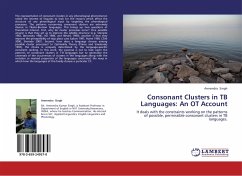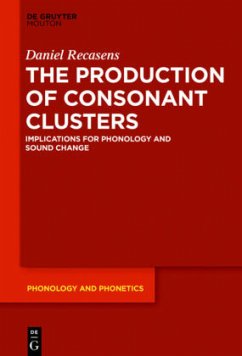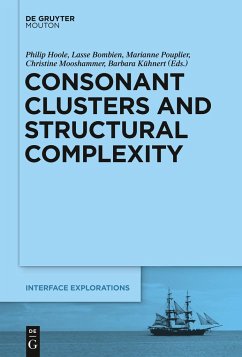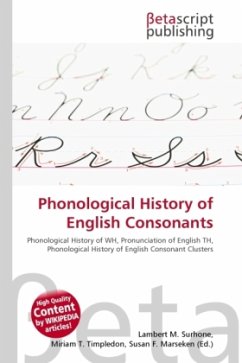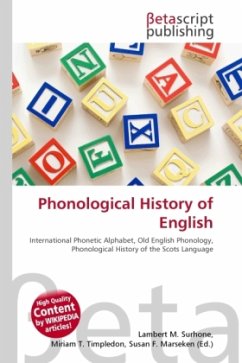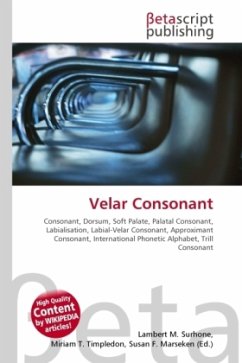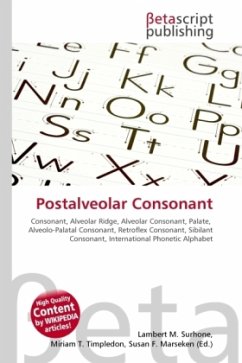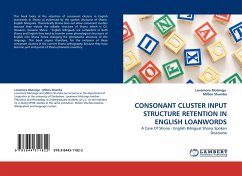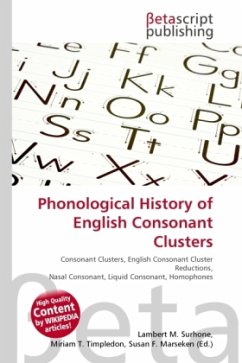
Phonological History of English Consonant Clusters
Versandkostenfrei!
Versandfertig in 6-10 Tagen
23,99 €
inkl. MwSt.

PAYBACK Punkte
12 °P sammeln!
High Quality Content by WIKIPEDIA articles! The phonological history of English consonant clusters is part of the phonological history of the English language in terms of changes in the phonology of consonant clusters.The h-cluster reductions are various consonant reductions that have occurred in the history of English involving consonant clusters beginning with /h/ that have lost the /h/ in certain varieties of English.The hole-whole merger is the replacement of /hw/ with /h/ before the vowels /o?/ and /u?/ which occurred in Old English. This is due to the effect that rounded back vowels have...
High Quality Content by WIKIPEDIA articles! The phonological history of English consonant clusters is part of the phonological history of the English language in terms of changes in the phonology of consonant clusters.The h-cluster reductions are various consonant reductions that have occurred in the history of English involving consonant clusters beginning with /h/ that have lost the /h/ in certain varieties of English.The hole-whole merger is the replacement of /hw/ with /h/ before the vowels /o?/ and /u?/ which occurred in Old English. This is due to the effect that rounded back vowels have on /h/, giving it velar and labial characteristics making /hw/ an allophone of /h/ before these vowels; the true phonetic /hw/ then eventually became perceived as this allophone of /h/ and no longer a phonologically distinct speech sound.The wine-whine merger is the merger of /hw/ with /w/. It occurs in the speech of the great majority of English speakers. Notable dialects that retain the distinction include Irish English, Scottish English, and Southern American English. This occurred after the hole-whole merger meaning that wh- is usually /w/ before orthographic a, e, i and y, but /h/ before orthographic o.



